FAQ - Advanced Bathroom Queries
Does Sewer Water Go to the Ocean

You might be thinking, ‘Does sewer water actually make its way to the ocean?’ Don’t worry, we’re here to clarify this procedure for you.
In this article, we delve into the intricate world of sewer systems, exploring the journey of wastewater from our homes to the vast ocean.
Join us as we explore the fascinating mechanisms of sewer water treatment, the effects on coastal ecosystems, and the global strategies and innovations shaping the future of sewer water disposal.
Get ready to dive into the science behind this vital aspect of modern civilization.

Key Takeaways
- Sewer water undergoes a multi-step treatment process including primary, secondary, and tertiary treatment methods to remove pollutants and impurities.
- Tertiary filtration techniques and disinfection methods such as chlorine, UV light, and ozone are used to further enhance the quality of treated sewer water before it is discharged into the ocean.
- Strict regulations are in place to monitor effluent discharge and prevent the release of harmful substances and pollutants into the ocean.
- The discharge of untreated sewer water can have negative environmental impacts, including the destruction of coastal habitats, oxygen depletion, excessive algal growth, and the transmission of pathogens.
Sewer System Basics
In our sewer system, wastewater from homes and businesses is transported through a network of pipes and ultimately flows into treatment facilities for processing.
Sewer system maintenance plays a crucial role in ensuring the functionality and efficiency of this complex infrastructure. Regular inspections, cleaning, and repairs are necessary to prevent blockages, leaks, and other potential issues.
Proper sewer system design is equally important, as it determines the capacity, layout, and flow of the system. Engineers consider factors such as population density, topography, and future growth projections when designing sewer systems.
Effective design ensures the proper conveyance of wastewater, minimizing the risk of backups and overflows.
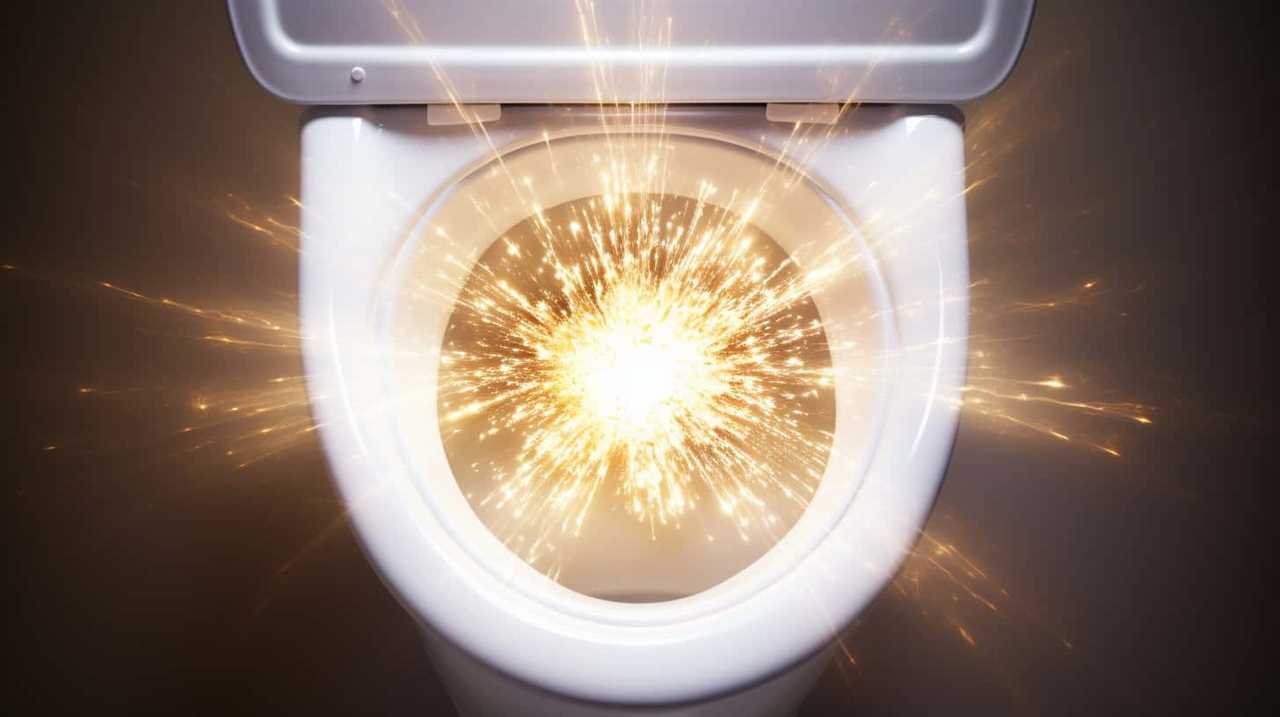
Sewer Water Treatment Process
Our treatment facilities process sewer water before it’s discharged into the ocean. Through a series of advanced treatment techniques and sewer water filtration processes, we ensure that the water is clean and safe for the environment.
Here is an overview of the sewer water treatment process:
- Primary Treatment: The water passes through screens to remove large debris and then settles in tanks to allow solids to settle to the bottom.
- Secondary Treatment: Microorganisms are added to the water to break down organic matter, and the water is aerated to promote their growth and activity.
- Tertiary Treatment: Advanced filtration techniques, such as sand filters or activated carbon filters, are used to remove remaining impurities.
- Disinfection: The water is treated with chemicals or exposed to ultraviolet light to kill any remaining pathogens.
- Final Discharge: The treated water is then discharged into the ocean, meeting the strict regulatory standards for water quality.
Primary Treatment Methods
To begin, we implement primary treatment methods to effectively remove large debris and solids from the sewer water. Primary treatment techniques involve physical processes that help separate solid materials from the wastewater. These methods are crucial in the initial stages of the treatment process, as they help reduce the load of pollutants before further treatment can take place.
One of the primary treatment techniques is screening, where wastewater passes through a series of screens to remove large objects such as rocks, sticks, and trash.
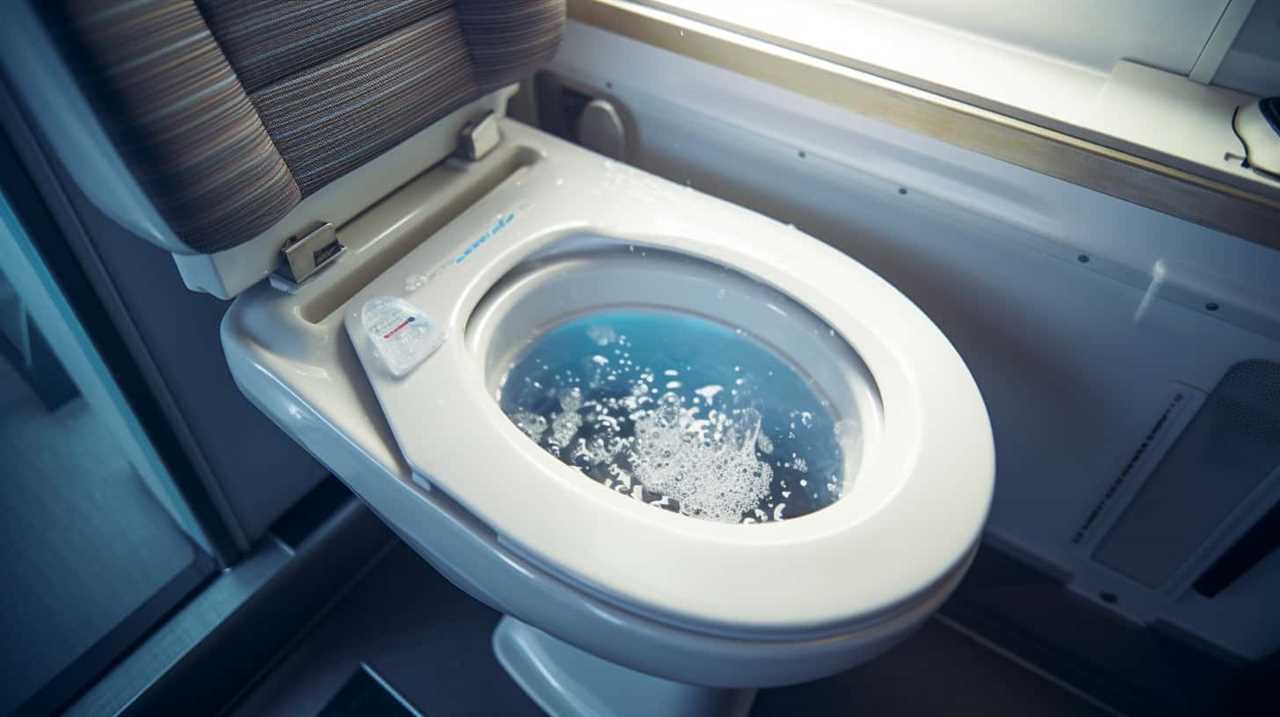
Another method is sedimentation, where the wastewater is held in large tanks and allowed to settle. This allows the heavier solids to settle at the bottom, forming sludge, while the clarified water is removed for further treatment.
Although primary treatment methods are effective in removing larger debris, they’ve limitations. Some challenges in primary treatment include the inability to remove dissolved pollutants and smaller suspended particles. Therefore, secondary treatment methods are necessary to further purify the wastewater and ensure its safety before it’s discharged into the environment.
Secondary Treatment Methods
Now let’s move on to discuss the secondary treatment methods used to further purify sewer water.
One common method is biological treatment processes, which involve the use of microorganisms to break down organic matter and remove pollutants.
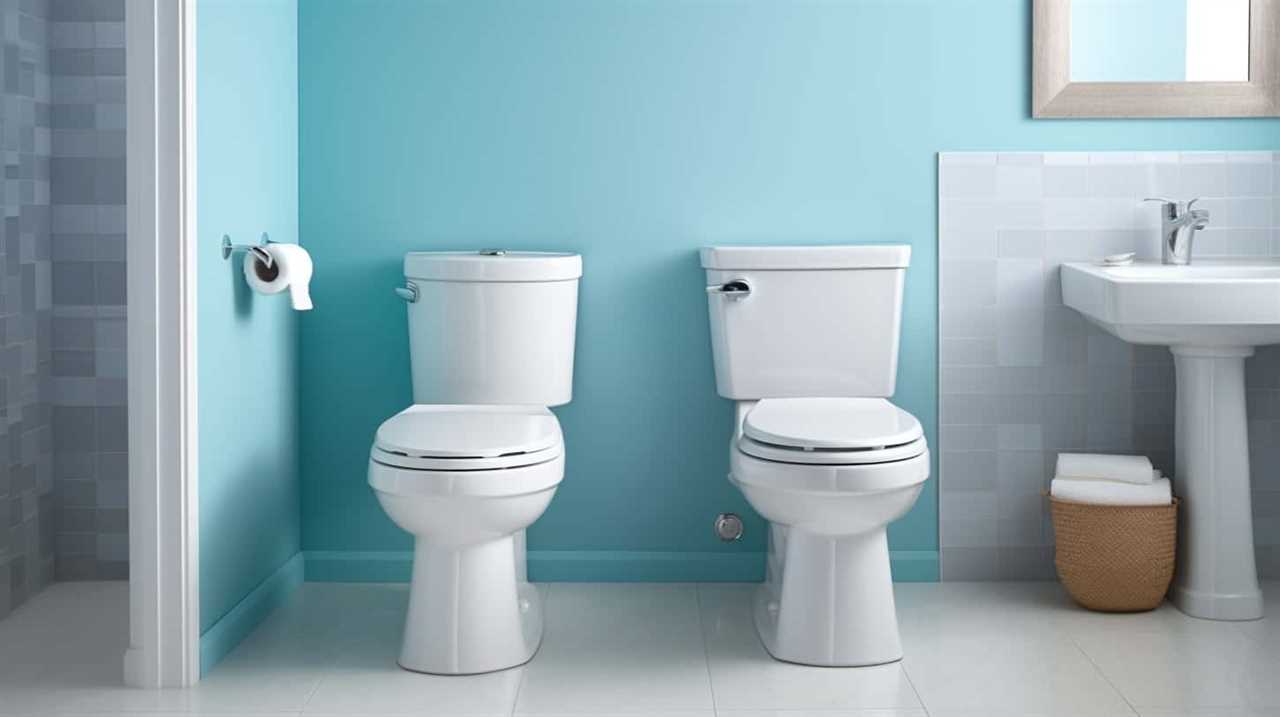
Another technique is tertiary filtration, where advanced filtration methods are employed to remove any remaining solids and contaminants.
These secondary treatment methods play a crucial role in ensuring that treated sewer water meets the required quality standards before it can be safely discharged into the environment.
Biological Treatment Processes
In the biological treatment processes, we utilize various methods to effectively treat sewer water before it’s discharged into the ocean. These methods are designed to improve the biological treatment efficiency and ensure proper sewage sludge management. Here are five key processes used in biological treatment:
- Activated Sludge Process: This process involves mixing wastewater with microorganisms in an aerated tank, allowing the microorganisms to break down organic matter.
- Trickling Filters: In this process, wastewater is sprayed onto a bed of rocks or plastic media, which provides a surface for biofilm growth. The biofilm then breaks down the organic compounds in the wastewater.
- Sequencing Batch Reactors (SBR): This process involves filling a tank with wastewater, allowing it to undergo treatment in distinct phases, including aeration, settling, and decanting.
- Oxidation Ditches: Wastewater is continuously mixed and aerated in a circular ditch, promoting the growth of microorganisms that break down organic matter.
- Rotating Biological Contactors (RBC): Wastewater flows over rotating discs that are covered in biofilm, which breaks down organic compounds.
These biological treatment processes play a crucial role in ensuring the effective treatment of sewer water before it’s discharged into the ocean. They help remove contaminants and reduce the environmental impact of wastewater discharge.

Tertiary Filtration Techniques
Continuing our discussion on biological treatment processes, we employ tertiary filtration techniques as secondary treatment methods to further enhance the quality of sewer water before its discharge into the ocean.
Tertiary filtration advancements have revolutionized the way we purify water, ensuring that it meets the highest standards of quality and safety. These emerging water purification techniques involve the use of advanced filtration systems, such as activated carbon filters and membrane filtration, to remove any remaining contaminants from the treated water.
Activated carbon filters effectively eliminate organic compounds and disinfection by-products, while membrane filtration removes suspended solids, bacteria, and viruses.
Tertiary Treatment Methods
After undergoing secondary treatment processes, the wastewater is further purified through the implementation of tertiary treatment methods. These methods play a crucial role in ensuring the removal of any remaining impurities and harmful substances before the water is discharged into the environment. Here are some key tertiary treatment methods:

- Disinfection: This involves the use of chemicals or UV radiation to kill any remaining disease-causing microorganisms.
- Filtration: Tertiary filtration techniques, such as sand or membrane filtration, help remove fine particles, sediments, and any remaining suspended solids.
- Nutrient removal: Advanced processes like biological and chemical nutrient removal are used to reduce the levels of nitrogen and phosphorus in the wastewater.
- Advanced oxidation: This method uses powerful oxidants, such as ozone or hydrogen peroxide, to break down and remove persistent organic compounds.
- Future innovations: Ongoing research focuses on developing more efficient and sustainable wastewater treatment methods, such as using advanced technologies like nanofiltration or incorporating artificial intelligence for process optimization.
Role of Wastewater Treatment Plants
After undergoing tertiary treatment methods, wastewater treatment plants play a crucial role in ensuring the safe and responsible disposal of treated water back into the environment. These facilities are designed to remove contaminants and pollutants from wastewater, making it suitable for release into rivers, lakes, or oceans. Wastewater treatment plants employ a series of processes, including physical, chemical, and biological methods, to achieve this goal.
The primary objective is to protect public health and prevent water pollution. Sewer system maintenance is an essential aspect of wastewater treatment plant operations. Regular inspection and cleaning of sewer lines prevent blockages and ensure the proper flow of wastewater to the treatment facility.
Disinfection of Sewer Water
When it comes to disinfecting sewer water, there are several effective methods that can be employed. These methods include the use of chlorine, ultraviolet (UV) light, and ozone.
Each method has its own advantages and disadvantages in terms of effectiveness, cost, and environmental impact. It’s important to carefully consider these factors in order to choose the most suitable disinfection method for a specific wastewater treatment plant.

Additionally, the environmental impact of disinfection should also be taken into account, as some disinfection byproducts can have negative effects on aquatic ecosystems.
Effective Disinfection Methods
To effectively disinfect sewer water, we rely on a combination of chemical treatments and ultraviolet light exposure. These disinfection techniques ensure the microbial inactivation of harmful pathogens present in the wastewater.
Here are five effective methods used in the disinfection process:
- Chlorination: Adding chlorine compounds to the water kills bacteria and viruses.
- Ozonation: Treating the water with ozone gas destroys organic compounds and eliminates microorganisms.
- UV disinfection: Exposing the water to ultraviolet light damages the DNA of microorganisms, preventing their reproduction.
- Advanced oxidation processes: Utilizing powerful oxidants like hydrogen peroxide or ozone to break down pollutants and neutralize pathogens.
- Membrane filtration: Passing the water through fine membranes removes bacteria, viruses, and other contaminants.
These methods ensure that the treated sewer water meets strict quality standards before being discharged.

Transitioning into the subsequent section about the environmental impact of disinfection, it’s crucial to consider the potential consequences of these disinfection methods on our ecosystems.
Environmental Impact of Disinfection
In our discussion on the environmental impact of disinfection methods for sewer water, we’ll examine the potential consequences these techniques have on our ecosystems.
Disinfection methods are crucial for maintaining public health by eliminating harmful pathogens and microorganisms present in sewer water. However, these methods can also have unintended environmental impacts.
One common disinfection method is the use of chlorine-based compounds, which can react with organic matter in the water and form harmful disinfection byproducts such as trihalomethanes. These byproducts can have detrimental effects on aquatic life and ecosystems.

Another method, ultraviolet (UV) disinfection, doesn’t produce harmful byproducts but may still have some ecological impact due to the energy consumption required.
As we explore the environmental implications of disinfection methods, it’s important to strike a balance between protecting public health and preserving our natural environment.
Public Health Considerations
As we consider the public health implications of disinfecting sewer water, it’s essential to prioritize the use of effective methods that protect both human well-being and the environment. Public health risks and the spread of waterborne diseases are significant concerns when it comes to sewer water disinfection.
Here are some key considerations:

- Adequate disinfection: Proper treatment methods, such as chlorination or ultraviolet (UV) irradiation, must be applied to eliminate harmful pathogens.
- Monitoring and testing: Regular monitoring and testing of the treated water is crucial to ensure that disinfection is effective and meets the required standards.
- Residual disinfection: Maintaining a residual disinfectant in the treated water distribution system helps prevent recontamination.
- Education and awareness: Public education campaigns can raise awareness about the importance of water safety and hygiene practices to prevent waterborne diseases.
- Collaboration and regulation: Effective collaboration between public health agencies, water treatment facilities, and regulatory bodies is necessary to enforce and maintain high standards of water disinfection.
Effluent Discharge Regulations
Our efforts to protect the ocean from sewer water include implementing strict regulations for the discharge of effluent. Effluent discharge monitoring is a crucial aspect of these regulations, ensuring that wastewater treatment facilities comply with the set standards.
These regulations aim to prevent harmful substances and pollutants from being released into the ocean, safeguarding marine ecosystems and public health. Wastewater treatment regulations dictate the proper treatment and disposal methods for effluent, reducing the potential impact on the environment.
By monitoring effluent discharge, we can identify any deviations from the regulations and take appropriate measures to address them. These regulations play a vital role in maintaining the health and sustainability of our oceans, protecting marine life from the harmful effects of sewer water.
Next, let’s explore the impact of sewer water on marine life.

Impact of Sewer Water on Marine Life
To understand the consequences of sewer water on marine life, we must examine the direct impact of effluent discharge on aquatic ecosystems. Sewer water contains various pollutants that can significantly affect marine biodiversity and disrupt the ecological balance. Here are some of the key impacts:
- Contamination: Sewer water carries harmful substances such as heavy metals, pesticides, and pharmaceuticals, which can contaminate the marine environment.
- Oxygen depletion: The discharge of organic matter from sewage can lead to oxygen depletion in water, causing hypoxic conditions that are detrimental to marine organisms.
- Algal blooms: Nutrients present in sewage, such as nitrogen and phosphorus, can trigger excessive algal growth, leading to harmful algal blooms that can harm marine life.
- Disease transmission: Sewage can harbor pathogens, increasing the risk of disease transmission to marine organisms.
- Habitat destruction: The physical and chemical changes caused by sewer water can destroy coastal habitats essential for marine biodiversity.
Understanding these impacts is crucial in implementing effective measures to protect our marine ecosystems and maintain their ecological balance.
Ocean Water Quality Monitoring
Ocean water quality monitoring plays a crucial role in assessing the impact of pollution on marine ecosystems.
Through pollution prevention measures and ecosystem impact assessments, we can gather valuable data on the health of our oceans and identify potential threats to marine life.

Pollution Prevention Measures
We actively monitor and maintain the quality of ocean water by implementing pollution prevention measures. These measures are crucial in minimizing the environmental impact of disinfection and ensuring the health of marine ecosystems.
Here are five key pollution prevention measures we employ:
- Regular water sampling and analysis: We collect samples from various locations to assess the water quality and identify any potential contaminants.
- Stormwater management: We implement strategies to manage and minimize the pollution carried by stormwater runoff, such as using green infrastructure and detention ponds.
- Wastewater treatment: We treat sewage and other wastewater to remove harmful substances before it’s discharged into the ocean.
- Education and outreach: We raise awareness among the public and stakeholders about the importance of preventing pollution and adopting sustainable practices.
- Regulatory enforcement: We enforce strict regulations and monitor compliance to prevent pollution from industries and other sources.
By implementing these pollution prevention measures, we ensure the health and integrity of our oceans.
Transitioning seamlessly into the subsequent section about ecosystem impact assessment.
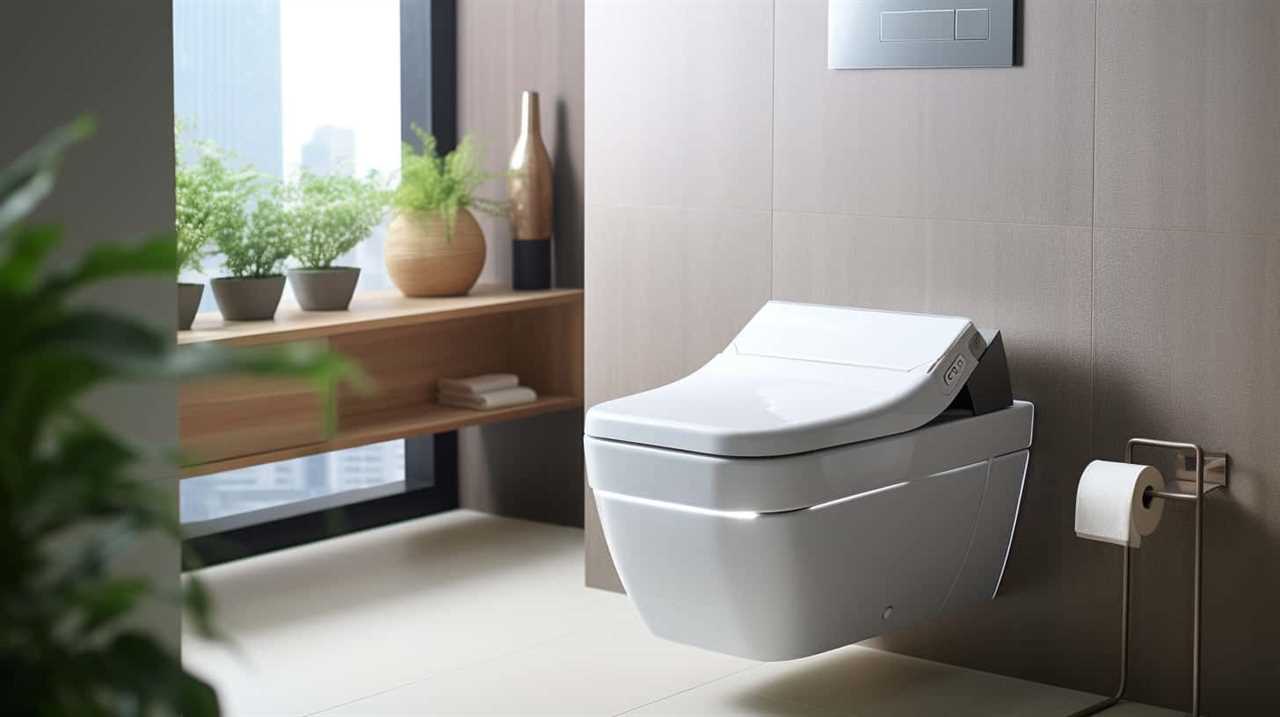
Ecosystem Impact Assessment
As part of our efforts to ensure the health and integrity of our oceans, we conduct ecosystem impact assessments to monitor the quality of ocean water. These assessments are crucial in understanding the potential impact of various factors on the marine ecosystem, including pollution, climate change, and human activities.
By monitoring the quality of ocean water, we can assess the potential impact on fisheries and coastal erosion, two key aspects of the marine ecosystem. The health of fisheries is directly related to the quality of ocean water, as pollution can harm marine life and disrupt the food chain. Additionally, coastal erosion can be influenced by changes in water quality, affecting the stability of coastal ecosystems.
Understanding these impacts allows us to develop strategies for mitigating any negative effects and ensuring the long-term health of our oceans.
In the next section, we’ll explore the specific impact of sewer water outfalls on ocean water quality.
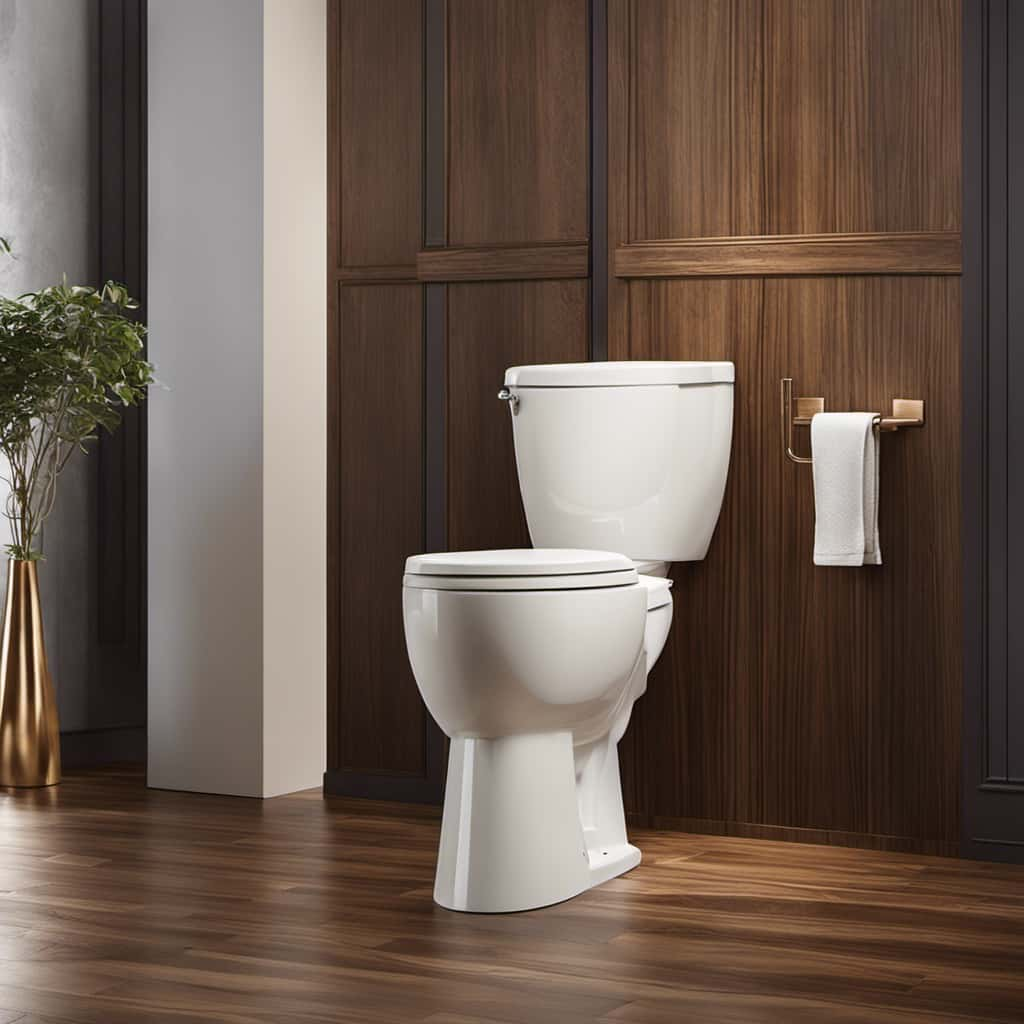
Sewer Water Outfalls
Sewer water outfalls are the points where wastewater from sewers is discharged into bodies of water. These outfalls play a crucial role in managing and controlling sewer outfall pollution.
To create imagery in your mind, consider the following:
- A large pipe extending from the shore, releasing a steady flow of wastewater into the ocean.
- A network of pipes beneath the city, transporting sewage to a designated outfall point.
- Treatment facilities near the outfall, ensuring the wastewater meets marine pollution control measures before being released.
- Coastal areas where the outfalls are strategically located, minimizing the impact on marine ecosystems.
- Environmental monitoring stations near the outfalls, continuously assessing water quality to protect marine life.
Sewer water outfalls are an essential part of our wastewater management system, helping to maintain the health and sustainability of our marine environments.
Effects of Sewer Water on Coastal Ecosystems
Continuing from the previous subtopic on sewer water outfalls, discharging wastewater into bodies of water, we now explore the effects of this wastewater on coastal ecosystems.

Sewer water pollution poses a significant threat to the health and stability of coastal ecosystems. When untreated or poorly treated sewage is released into the ocean, it can result in the degradation of marine habitats and the decline of marine species.
The high levels of nutrients, such as nitrogen and phosphorus, in sewer water can lead to eutrophication, causing harmful algal blooms and oxygen depletion. These environmental changes can disrupt the delicate balance of coastal ecosystems, leading to the loss of biodiversity and the collapse of fisheries.
Furthermore, sewer water pollution can also introduce harmful pathogens and contaminants into the marine environment, posing risks to human health.
To mitigate these impacts, effective sewer water management strategies are crucial.

Sewer Water Management Strategies
Now let’s explore some of the sewer water management strategies that are employed to address the treatment and disposal of sewage.
These strategies include various treatment methods for sewage, such as physical, chemical, and biological processes, which aim to remove contaminants and pathogens from the water.
It’s important to consider the environmental impacts of sewer systems, such as the potential for water pollution and habitat disruption, and implement measures to mitigate these effects.
Treatment Methods for Sewage
How can we effectively manage and treat sewage to minimize its impact on the environment?
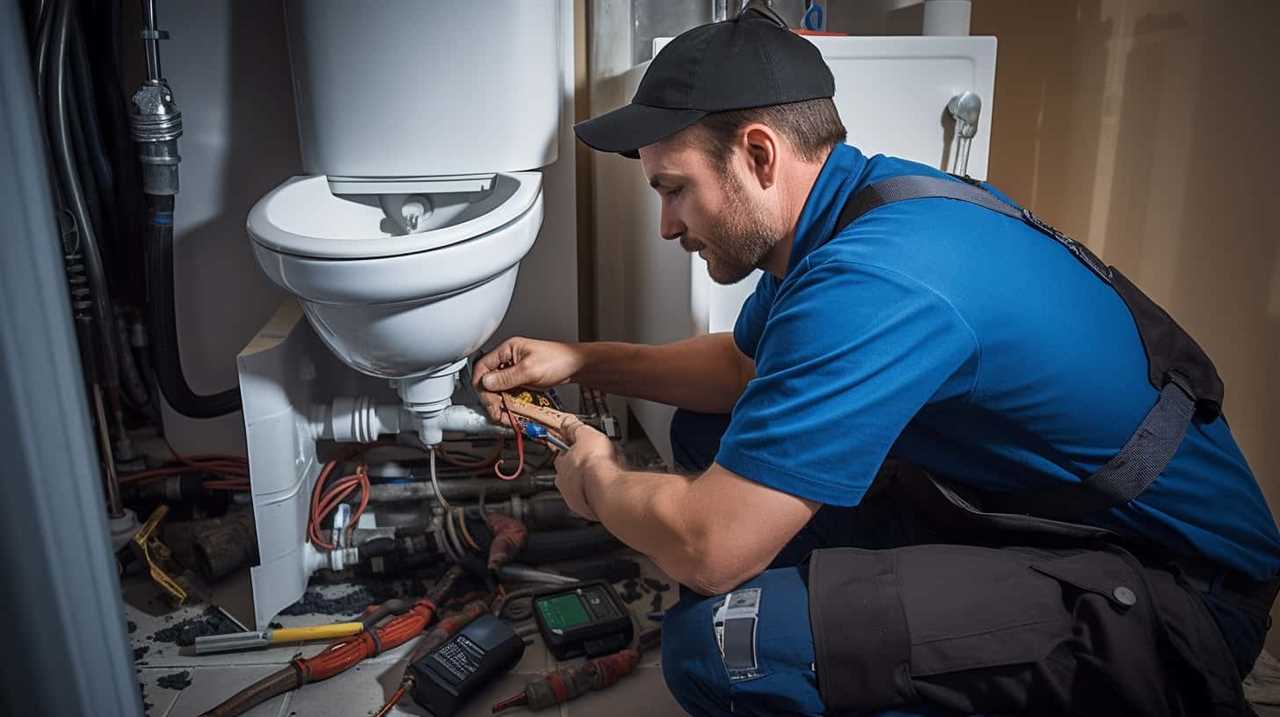
There are several biological treatment techniques and advanced filtration methods that help in the treatment of sewage. These methods include:
- Activated sludge process: This method uses microorganisms to break down organic matter in the sewage.
- Trickling filters: Sewage is sprayed over a bed of rocks or plastic media, allowing bacteria to remove pollutants.
- Membrane bioreactors: This combines biological treatment with a membrane filtration system to produce high-quality effluent.
- UV disinfection: Ultraviolet light is used to kill harmful bacteria and viruses in the treated sewage.
- Reverse osmosis: This method uses a semipermeable membrane to remove dissolved salts and impurities from the sewage.
By implementing these treatment methods, we can ensure that sewage is properly treated before being discharged into the environment, minimizing its impact on surrounding ecosystems and water bodies.
Now, let’s move on to discuss the environmental impacts of sewers.
Environmental Impacts of Sewers
To manage and minimize the environmental impacts of sewers, we employ various sewer water management strategies. Sewer water pollution is a significant concern as untreated sewage can contain harmful pathogens, nutrients, and chemicals that can negatively impact aquatic ecosystems.
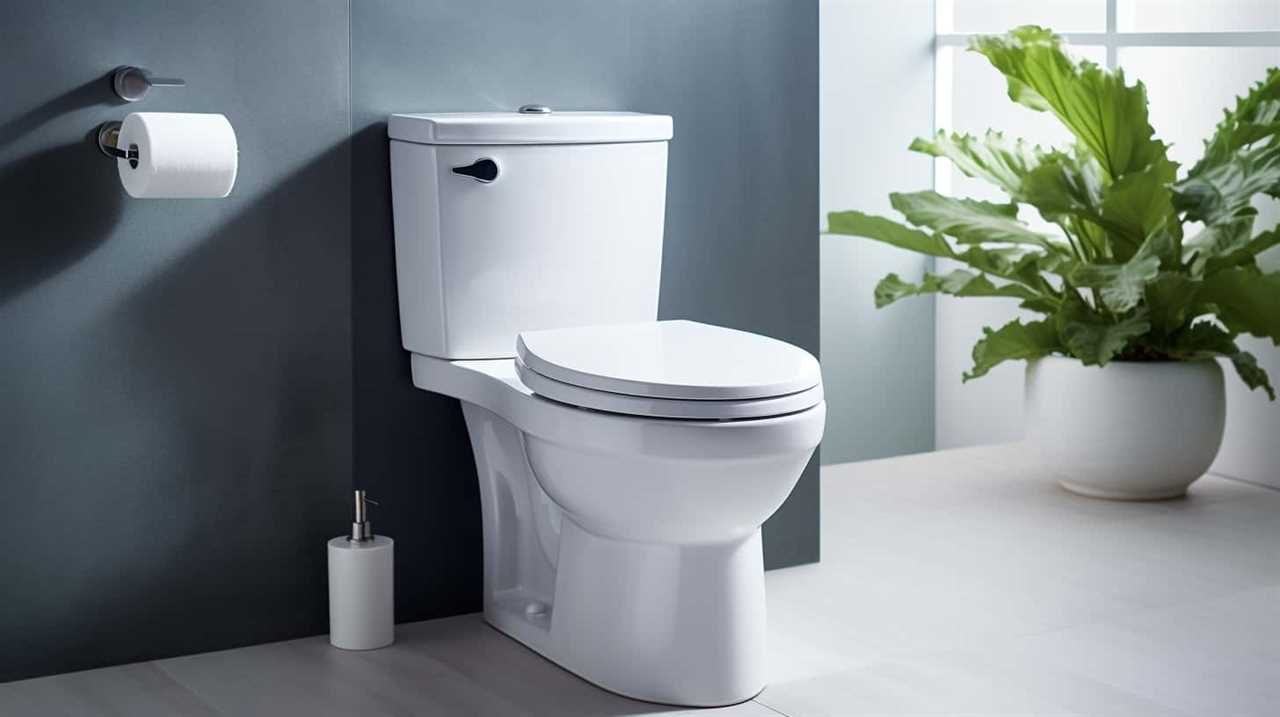
To combat this issue, sewage treatment advancements have been made to improve the quality of treated wastewater before it’s discharged back into the environment. These advancements include primary treatment, which involves the removal of large solids, and secondary treatment, where biological processes remove organic materials and nutrients. Additionally, advanced treatment methods such as tertiary treatment and disinfection help further remove contaminants from the wastewater.
By implementing these strategies, we can significantly reduce the environmental impacts of sewer water and protect our water bodies.
Now, let’s explore the global perspectives on sewer water disposal.
Global Perspectives on Sewer Water Disposal
Our research indicates that many countries around the world use varying methods for disposing of sewer water. These methods are essential in preventing ocean pollution and ensuring proper wastewater disposal.

Here are some global perspectives on sewer water disposal:
- In some countries, sewer water undergoes primary treatment before being discharged into rivers or lakes.
- Other countries have advanced treatment systems that remove contaminants and pollutants from sewer water before it’s released into the environment.
- Some countries have implemented strict regulations on sewer water disposal, requiring the use of tertiary treatment processes to ensure the highest level of water quality.
- Certain regions have developed innovative solutions such as water recycling and reuse, where treated sewer water is used for irrigation or industrial purposes.
- In coastal areas, some countries have implemented offshore discharge systems, where treated sewer water is released into the ocean at a safe distance from the shoreline.
These global perspectives highlight the importance of proper sewer water disposal in safeguarding our oceans and maintaining environmental sustainability.
Future Innovations in Sewer Water Treatment
One potential future innovation in sewer water treatment involves implementing advanced filtration systems to remove microplastics and other emerging contaminants. These future technologies aim to provide sustainable solutions for the treatment of sewer water. They address the increasing concerns around the presence of microplastics and other harmful substances in wastewater.
Advanced filtration systems utilize various techniques such as membrane filtration, activated carbon adsorption, and advanced oxidation processes. These techniques effectively remove microplastics and emerging contaminants from the wastewater stream. Promising results have been observed in laboratory settings and pilot-scale studies.
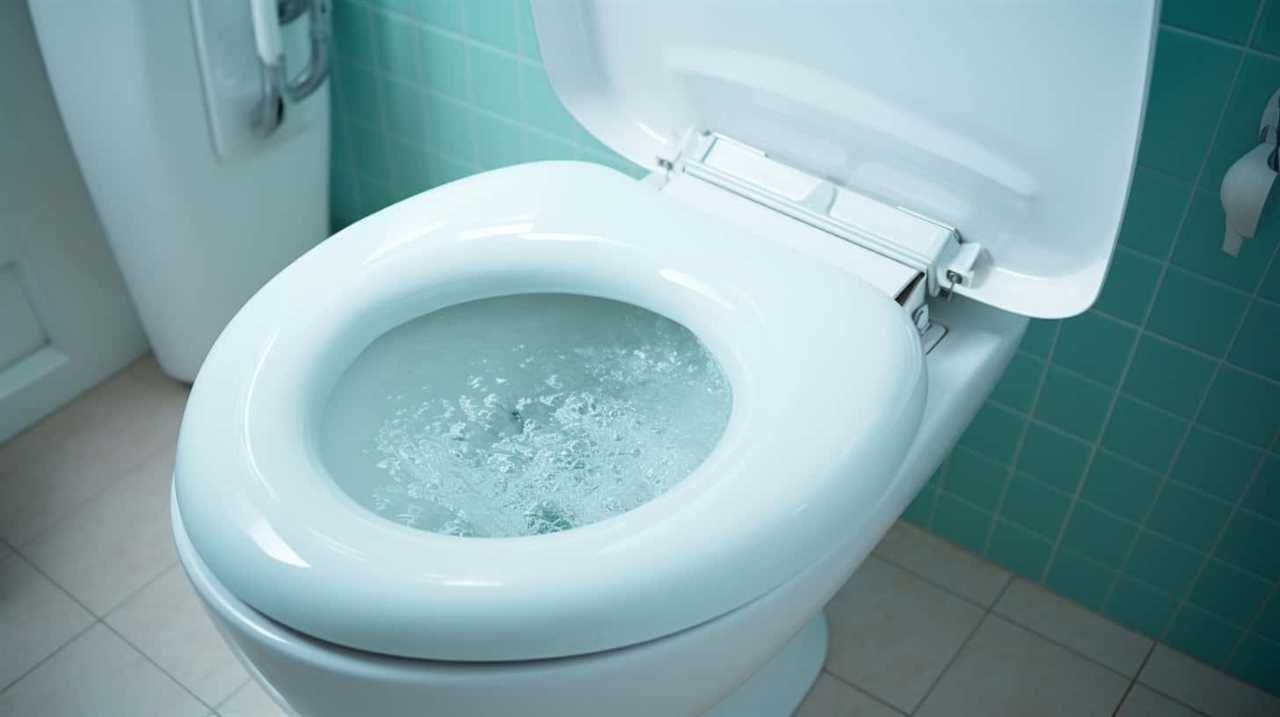
Further research and development are being conducted to optimize the efficiency and cost-effectiveness of these technologies. The goal is to implement these innovative solutions on a larger scale. By doing so, we can ensure the protection of our water resources and the environment. This will create a more sustainable future for wastewater treatment.
Frequently Asked Questions
What Are the Potential Health Risks Associated With the Discharge of Sewer Water Into the Ocean?
Potential health risks and environmental impacts arise from the discharge of sewer water into the ocean. Contaminants in sewage can lead to waterborne diseases and harm marine ecosystems, threatening human and aquatic life.
How Do Wastewater Treatment Plants Ensure That the Sewer Water Being Discharged Meets Regulatory Standards?
Wastewater treatment plants utilize various methods to ensure sewer water meets regulatory standards. These may include physical, chemical, and biological processes. Compliance is achieved through rigorous monitoring, testing, and implementation of advanced technologies.
What Are the Main Factors That Contribute to the Degradation of Ocean Water Quality Due to Sewer Water?
Sewer water treatment is crucial to prevent environmental impact on ocean water quality. Factors like improper treatment, combined sewer overflows, and stormwater runoff contribute to the degradation of ocean water quality.

Are There Any Negative Effects on Marine Life Caused by Sewer Water Outfalls?
Negative impacts on marine life caused by sewer water outfalls include ecosystem effects such as reduced oxygen levels, increased nutrient pollution, and higher concentrations of harmful contaminants. These effects can be compared to a toxic cocktail poisoning the ocean.
What Are Some Innovative Approaches Being Explored for Improving Sewer Water Treatment in the Future?
Innovative technologies and sustainable solutions are being explored to improve sewer water treatment. These advancements aim to address environmental concerns and enhance the quality of treated water, ensuring a healthier ecosystem for marine life.
Conclusion
In conclusion, sewer water doesn’t directly go to the ocean as it undergoes a comprehensive treatment process to remove harmful substances and contaminants.
Primary, secondary, and tertiary treatment methods are employed to ensure the water is safe for disposal.

However, despite these efforts, the effects of sewer water on coastal ecosystems can still be significant.
Therefore, effective sewer water management strategies and future innovations in treatment are crucial to minimize the impact on our precious marine environments.
As the saying goes, ‘Prevention is better than cure.’
With an impeccable eye for detail and a passion for bathroom-related, Ava leads our editorial team gracefully and precisely.
Under her guidance, Best Modern Toilet has flourished as the go-to resource for modern bathroom enthusiasts. In her free time, you might find Ava exploring antique shops and looking for vintage bathroom fixtures to add to her collection.
FAQ - Advanced Bathroom Queries
How Do You Increase the Flushing Pressure on a Commercial Toilet

Were you aware that inadequate flushing pressure is a frequent issue in commercial restroom facilities? If you’re having trouble getting a proper flush, we have the solution for you.
In this article, we will share expert tips and techniques to increase the flushing pressure on your commercial toilet. From checking water supply issues to adjusting the flapper valve and installing a pressure-assist system, we’ll provide you with the knowledge and tools you need to master the art of a powerful flush.
Key Takeaways
- Check water pressure and flow rate to identify low flushing pressure.
- Adjust the flapper valve to ensure proper opening and closing.
- Clean or replace the flush valve to remove debris and mineral deposits.
- Inspect and clean the rim holes regularly to maintain proper water flow.
Check for Water Supply Issues
We can check for water supply issues by examining the water pressure and flow rate to determine if it’s causing the low flushing pressure on a commercial toilet.
One possible cause of low flushing pressure is clogged pipes, which can restrict the water flow and result in inadequate flushing power. To check for clogged pipes, we can inspect the plumbing system for any signs of blockages or obstructions.

Additionally, it’s crucial to ensure proper water pressure for effective flushing. Insufficient water pressure can lead to weak flushes and unsatisfactory performance. To address this issue, we can check the water pressure regulator and adjust it if necessary.
Adjust the Flapper Valve
To increase the flushing pressure on a commercial toilet, adjusting the flapper valve is essential. The flapper valve is responsible for controlling the release of water from the tank into the bowl during a flush.
By making the following adjustments, you can optimize the performance of the flapper valve and increase the flushing pressure:
- Adjust the chain length: Ensure that the chain connecting the flush lever to the flapper valve is neither too loose nor too tight. A loose chain may prevent the flapper valve from fully opening, while a tight chain may cause the flapper valve to close prematurely.
- Replace the handle: If the handle is worn or damaged, it may not allow the flapper valve to open fully. By replacing the handle with a new one, you can ensure that the flapper valve opens completely, allowing for a stronger flush.
Clean or Replace the Flush Valve
To clean or replace the flush valve, start by shutting off the water supply and flushing the toilet to empty the tank. Once the tank is empty, you can proceed with the cleaning or replacement process.

If you choose to clean the flush valve, use appropriate cleaning methods such as soaking it in a mixture of vinegar and water or using a toilet bowl cleaner. Be sure to scrub the valve thoroughly to remove any built-up debris or mineral deposits.
If cleaning doesn’t resolve the issue, it may be necessary to replace the flush valve. Troubleshooting tips for replacing the flush valve include following the manufacturer’s instructions, ensuring a proper fit, and testing the flush after installation.
Inspect and Clean the Rim Holes
To effectively inspect and clean the rim holes, we need to use a small brush and a mixture of water and vinegar. This process is crucial in troubleshooting water pressure issues and ensuring optimal flushing performance. Here is a step-by-step guide to successfully inspect and clean the rim jets:
- Begin by turning off the water supply to the toilet.
- Take the small brush and dip it into the water and vinegar mixture.
- Gently scrub the rim holes, making sure to remove any mineral deposits or debris that may be obstructing the flow of water.
- Rinse the rim holes thoroughly with clean water to remove any remaining residue.
Inspecting and cleaning the rim holes is an essential task to maintain proper water flow and increase flushing pressure. Once this step is completed, we can move on to considering the installation of a pressure-assist system, which can further enhance the flushing performance of the commercial toilet.
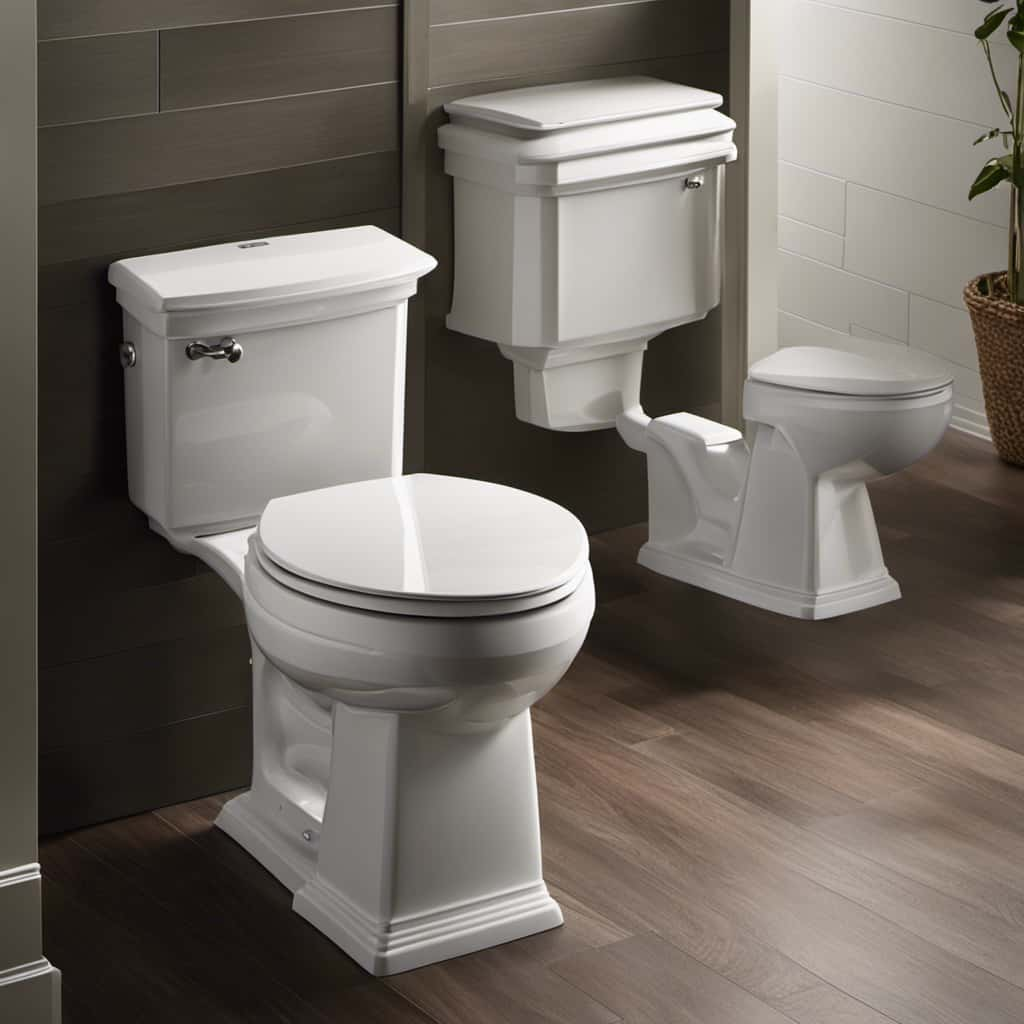
Consider Installing a Pressure-Assist System
Now let’s delve into the benefits of installing a pressure-assist system to further enhance the flushing performance of the commercial toilet. Water pressure control is crucial for efficient flushing, and pressure-assist systems offer a solution to this issue. These systems work by using compressed air to create higher water pressure, resulting in a more forceful flush.
By installing a pressure-assist system, you can ensure consistent and powerful flushing, even with low water pressure.
The benefits of pressure-assist systems in commercial toilets are significant. Firstly, they provide a more thorough and effective flush, reducing the risk of clogs and blockages. Secondly, they use less water per flush compared to traditional gravity-fed toilets, resulting in water savings and lower utility costs.
Additionally, pressure-assist systems are known for their durability and long lifespan, making them a cost-effective investment in the long run. Overall, installing a pressure-assist system in your commercial toilet can improve flushing performance, save water, and enhance overall efficiency.

Frequently Asked Questions
How Much Does It Cost to Install a Pressure-Assist System in a Commercial Toilet?
Cost analysis and benefits comparison are important when considering the installation of a pressure-assist system in a commercial toilet. It’s crucial to assess the expenses involved and weigh them against the advantages it can provide.
What Are the Signs of a Faulty Flapper Valve in a Commercial Toilet?
When troubleshooting flapper valve problems, signs of issues include inconsistent flushing, water leaks, and phantom flushing. Proper maintenance and replacement of faulty flapper valves can restore optimal performance to commercial toilets.
Can a Clogged Rim Hole Affect the Flushing Pressure of a Commercial Toilet?
A clogged rim hole in a commercial toilet can indeed affect the flushing pressure. It is important to ensure that the rim holes are clear of any debris or buildup to maintain optimal flushing performance.
Is It Necessary to Hire a Professional Plumber to Clean or Replace the Flush Valve?
Hiring a professional plumber may not always be necessary for cleaning or replacing the flush valve. With proper guidance and tools, we can tackle the task ourselves, saving time and money.
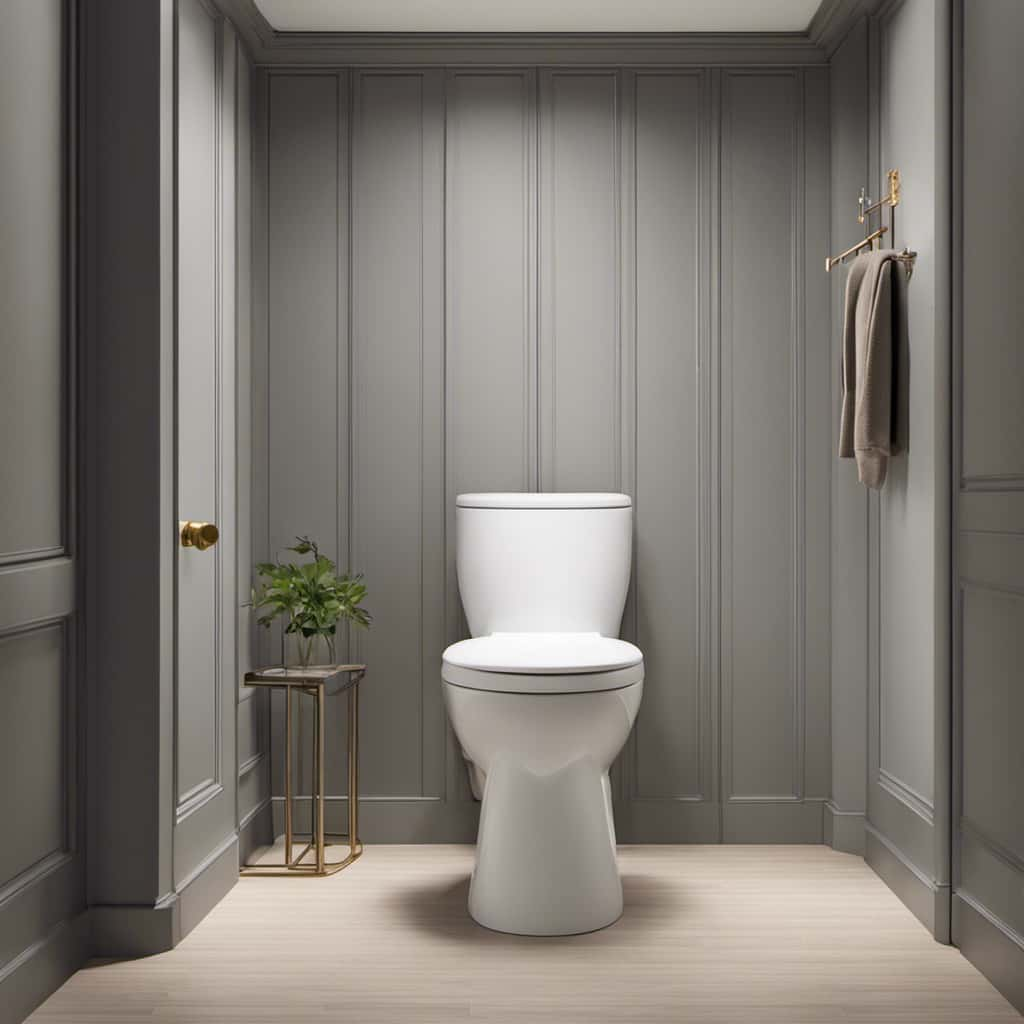
Are There Any Alternative Methods to Increase Flushing Pressure in a Commercial Toilet Without Installing a Pressure-Assist System?
There are alternative methods to increase flushing pressure in a commercial toilet without installing a pressure-assist system. We can troubleshoot the issue by checking the water supply, adjusting the flush valve, or cleaning the bowl rim holes.
Conclusion
In conclusion, increasing the flushing pressure on a commercial toilet can be achieved by addressing water supply issues. This may involve checking for any restrictions or blockages in the water supply line and ensuring that the valve supplying water to the toilet is fully open.
Another way to increase flushing pressure is by adjusting the flapper valve. The flapper valve controls the release of water from the tank into the bowl during flushing. By adjusting the chain or replacing the flapper valve if necessary, you can ensure a more powerful flush.
Cleaning or replacing the flush valve can also help improve flushing pressure. Over time, mineral deposits or debris may accumulate on the flush valve, affecting its performance. By cleaning or replacing it, you can restore optimal flushing pressure.

Inspecting and cleaning the rim holes is another important step in increasing flushing pressure. The rim holes are located under the rim of the toilet bowl and are responsible for directing water into the bowl during flushing. If these holes are clogged, it can hinder the flow of water and reduce flushing pressure. By inspecting and cleaning them regularly, you can maintain optimal flushing performance.
For more significant pressure improvement, consider installing a pressure-assist system. These systems use pressurized air to enhance flushing power, resulting in a more efficient and forceful flush.
By following these steps, you can ensure a more efficient and powerful flush, leaving your commercial toilet operating at its best. With these methods, your toilet will be as unstoppable as a rushing river, leaving you worry-free.
With an impeccable eye for detail and a passion for bathroom-related, Ava leads our editorial team gracefully and precisely.
Under her guidance, Best Modern Toilet has flourished as the go-to resource for modern bathroom enthusiasts. In her free time, you might find Ava exploring antique shops and looking for vintage bathroom fixtures to add to her collection.
FAQ - Advanced Bathroom Queries
What Should You Not Flush in the Toilet
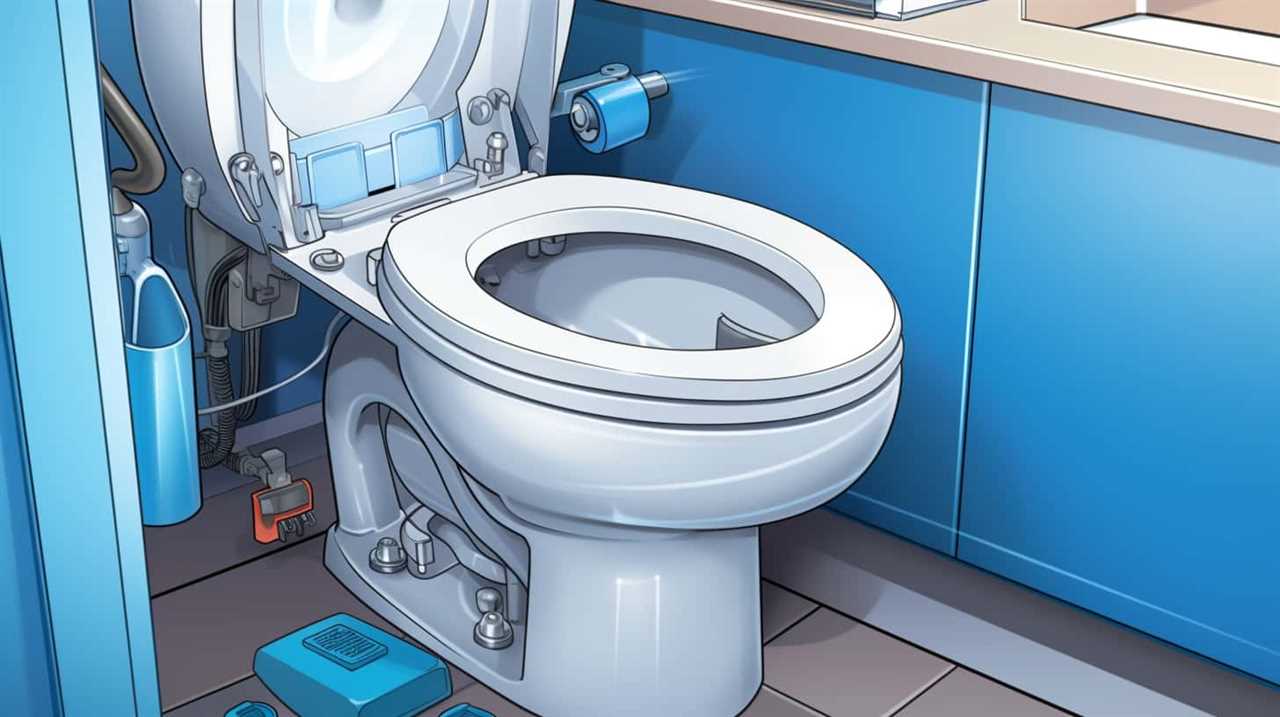
We are all aware that the toilet is a mysterious place where items vanish with a quick flush. However, it is important to remember, my friends, that not everything should be disposed of in this porcelain palace. Oh no.
In fact, there are some items that can cause serious damage to our plumbing and the environment.
So, let’s dive into the depths of toilet wisdom and find out exactly what we should not, I repeat, should not flush in the toilet.
Key Takeaways
- Non-biodegradable items such as plastic waste, disposable diapers, wrappers, bottles, and packaging should not be flushed as they can cause blockages in the sewage system and harm marine life.
- Personal hygiene products like tampons, pads, diapers, wipes, and condoms should not be flushed as they can lead to plumbing system blockages and backups.
- Medications and chemicals should not be flushed as they can contaminate water sources and harm aquatic life. They should be properly disposed of at local pharmacies or waste management facilities.
- Oils, grease, fat, paper towels, and wet wipes should not be flushed as they can cause plumbing system damage, contribute to pollution, and harm the environment. Proper disposal methods should be followed to prevent these issues.
Non-Biodegradable Items
When it comes to non-biodegradable items, we need to be mindful of what we flush down the toilet. Plastic waste and disposable diapers are two common examples that should never be flushed.

Plastic waste, such as wrappers, bottles, or packaging, can clog pipes and cause blockages in the sewage system. These items aren’t designed to break down in water and can lead to costly repairs.
Disposable diapers, although convenient, are made from materials that don’t biodegrade easily. Flushing them can lead to significant environmental problems, as they can end up in water bodies, harming marine life and polluting the ecosystem.
It’s crucial to dispose of these items properly in designated waste bins to prevent negative impacts on our plumbing systems and the environment as a whole.
Personal Hygiene Products
We should not flush personal hygiene products down the toilet. Flushing these products can cause blockages in the plumbing system, leading to costly repairs. Additionally, these products can have a detrimental impact on the environment. Proper disposal methods for personal hygiene products include throwing them in the trash or using designated disposal bins. It is important to remember that even if a product is labeled as "flushable," it does not mean it should be flushed. Flushing personal hygiene products can contribute to clogged sewer lines and sewage backups. To emphasize this point, consider the following table:
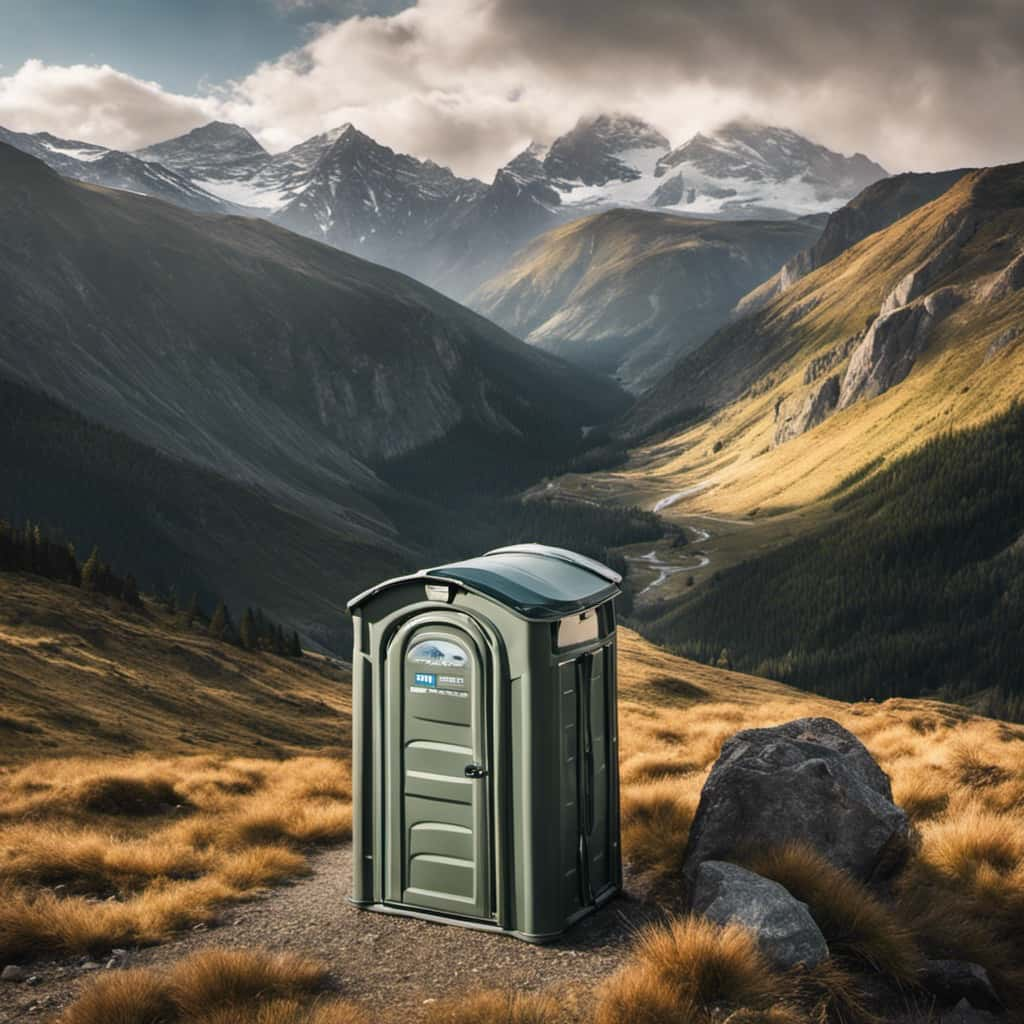
| Personal Hygiene Products |
|---|
| Tampons |
| Pads |
| Diapers |
| Wipes |
| Condoms |
Medications and Chemicals
In an article titled ‘What Should You Not Flush in the Toilet’, it’s important to address the issue of medications and chemicals that shouldn’t be flushed. Proper disposal of these substances is crucial to minimize their environmental impact and protect our water resources.
Here are three items that should never be flushed down the toilet:
- Medications: Flushing unused or expired medications can contaminate water sources, harming aquatic life and potentially affecting human health. Instead, take them to a local pharmacy or participating collection site for safe disposal.
- Household chemicals: Cleaning products, solvents, and pesticides should never be flushed as they can disrupt wastewater treatment processes and pollute rivers and lakes. Check with your local waste management facility for proper disposal methods.
- Personal care products containing chemicals: Items like tampons, diapers, and wet wipes shouldn’t be flushed, as they can cause blockages in sewer systems and contribute to pollution. Dispose of them in the trash instead.
Oils, Grease, and Fat
To prevent plumbing issues and protect the environment, it is important to properly dispose of oils, grease, and fat. These substances can cause significant damage to both your plumbing system and the environment when they are flushed down the toilet. When oils, grease, and fat enter the plumbing system, they can solidify and create blockages that can lead to costly repairs. Additionally, these substances can have a detrimental environmental impact when they enter sewage systems and waterways, causing pollution and harm to aquatic life. To help you understand the importance of proper disposal, here is a table outlining the environmental impact and potential plumbing problems caused by flushing oils, grease, and fat.
| Substance | Environmental Impact | Plumbing Problems |
|---|---|---|
| Oils | Can contaminate water sources and harm aquatic life | Clogs pipes and causes backups |
| Grease | Pollutes waterways and can be toxic to marine organisms | Solidifies in pipes and causes blockages |
| Fat | Contributes to water pollution and harms ecosystems | Accumulates in pipes and leads to sewer backups |
Paper Towels and Wet Wipes
Let’s talk about why flushing paper towels and wet wipes down the toilet is a bad idea. Not only does it have a negative environmental impact, but it can also cause serious plumbing issues.

Here are three reasons why you should never flush paper towels and wet wipes down the toilet:
- Environmental Impact: Flushing paper towels and wet wipes contributes to clogged sewer systems and can lead to sewage spills. These spills can contaminate our water sources and harm aquatic life. Additionally, these materials don’t break down like toilet paper, leading to increased waste in landfills.
- Plumbing Issues: Paper towels and wet wipes aren’t designed to dissolve in water like toilet paper. Flushing them down the toilet can clog pipes and cause blockages, leading to expensive repairs and potential damage to your plumbing system.
- Costly Consequences: Dealing with plumbing issues caused by flushing paper towels and wet wipes can be a costly affair. Not only will you need to hire a professional plumber to fix the problem, but you may also have to deal with water damage and the inconvenience of not having a functioning toilet.
To avoid these problems, dispose of paper towels and wet wipes in the trash instead of flushing them down the toilet.
Frequently Asked Questions
Can I Flush Non-Biodegradable Items Down the Toilet if They Are Small Enough?
We should never flush non-biodegradable items down the toilet, even if they are small. Doing so can cause potential plumbing issues such as clogs and blockages. It’s important to dispose of these items properly.
Why Can’t I Flush Personal Hygiene Products Down the Toilet?
Flushing personal hygiene products can have a negative environmental impact. It’s important not to flush them because they can clog pipes and sewage systems. Instead, dispose of them in the trash to avoid potential problems.
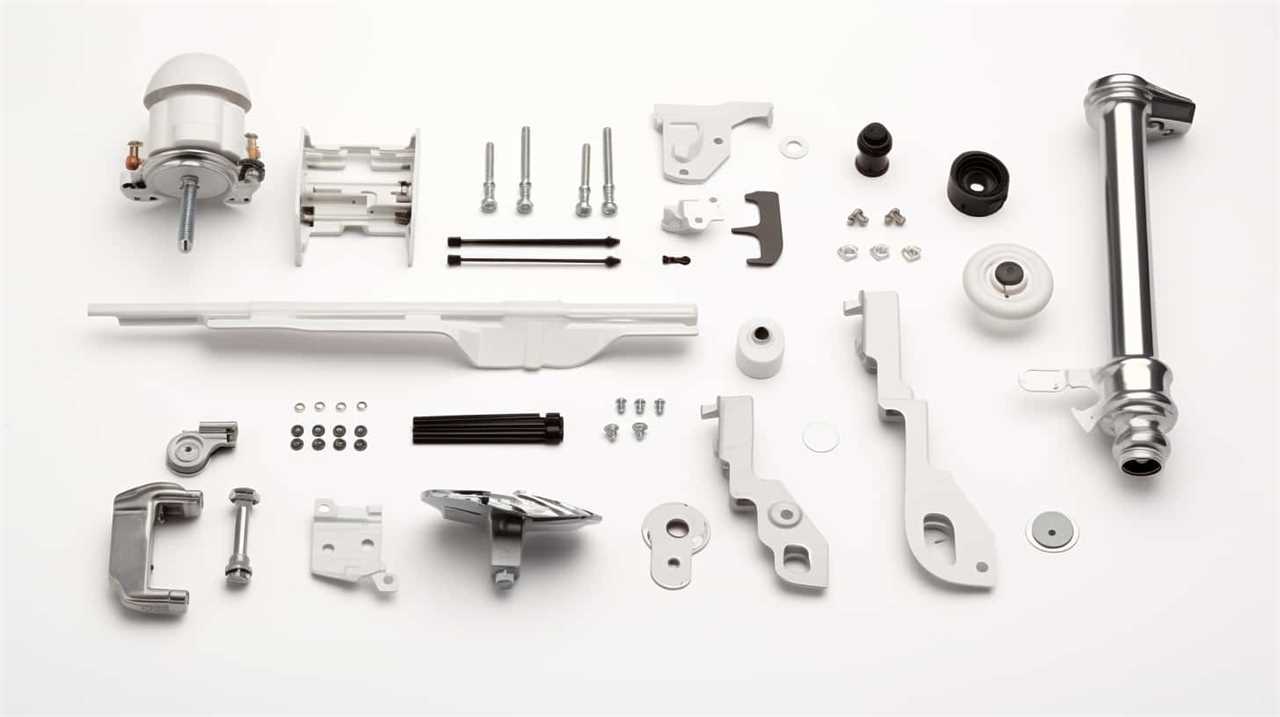
Is It Safe to Flush Medications and Chemicals Down the Toilet?
Flushing expired medications and chemicals down the toilet is not safe. Proper disposal is essential to protect both our environment and our health. Let’s explore the correct ways to dispose of these items.
Can Small Amounts of Oil, Grease, or Fat Be Safely Flushed Down the Toilet?
Flushing oils and chemicals can have a negative impact on the environment and sewage systems. It is important to avoid flushing non-biodegradable items to prevent clogs and contamination.
What Is the Difference Between Flushing Paper Towels and Wet Wipes and Flushing Toilet Paper?
Flushing paper towels and wet wipes may seem similar to flushing toilet paper, but the difference lies in their environmental impact. Non-biodegradable items like these can clog pipes and harm marine life. It’s best to dispose of them properly.
Conclusion
In conclusion, when it comes to flushing items down the toilet, it’s crucial to remember that not everything is meant to go down the drain.

Non-biodegradable items, personal hygiene products, medications and chemicals, oils, grease, fat, and paper towels and wet wipes should never be flushed. These items can cause blockages in the plumbing system and harm the environment.
So, let’s be mindful of what we flush, and keep our toilets and our planet healthy and happy.
With an impeccable eye for detail and a passion for bathroom-related, Ava leads our editorial team gracefully and precisely.
Under her guidance, Best Modern Toilet has flourished as the go-to resource for modern bathroom enthusiasts. In her free time, you might find Ava exploring antique shops and looking for vintage bathroom fixtures to add to her collection.
FAQ - Advanced Bathroom Queries
What Happens if You Flush the Toilet When the Water Softener Is Regenerating
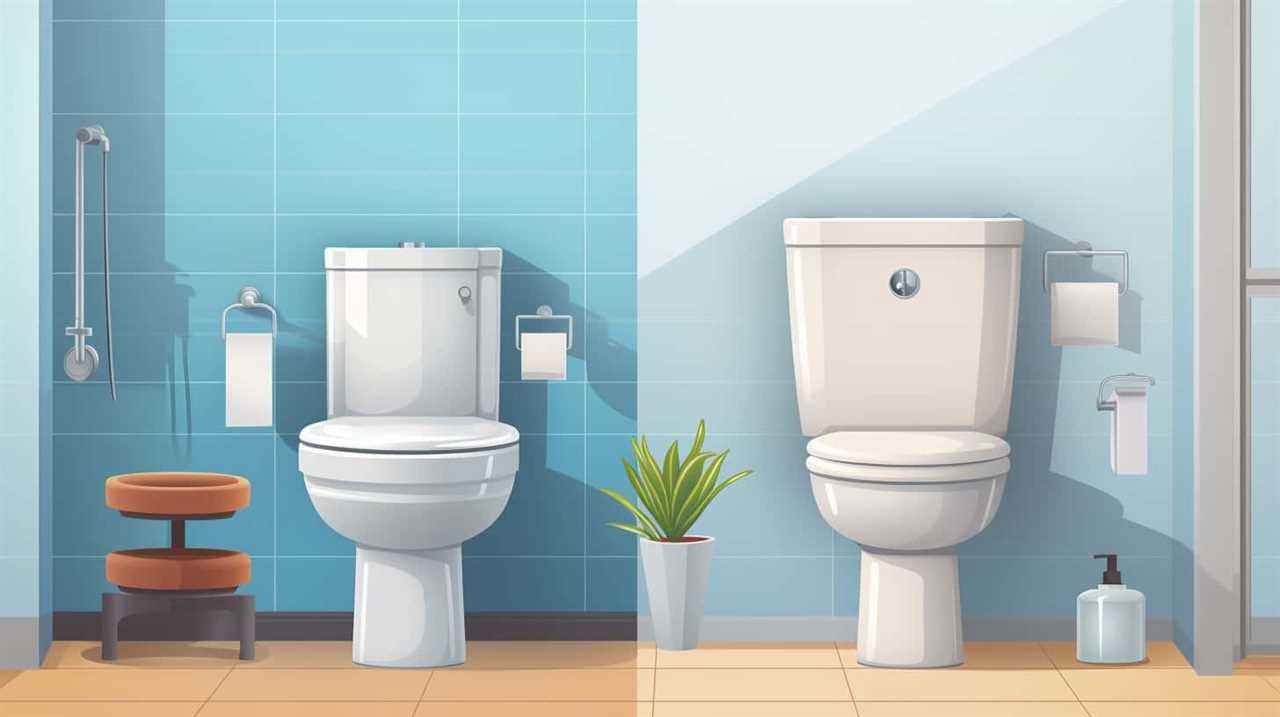
As water softening aficionados, we understand the significance of regular upkeep. But what occurs if we inadvertently flush the toilet while the water softener is regenerating?
Well, let us dive into the technicalities. Flushing the toilet during regeneration can lead to potential damage to the water softener system, reduced effectiveness of water softening, increased water hardness in the plumbing system, risk of clogging or backup, and an extended regeneration process with unnecessary water waste.
It’s vital to understand the consequences and avoid such missteps to ensure a mastery over water softening.
Key Takeaways
- Flushing the toilet during regeneration can cause potential damage to the water softener system.
- Water usage during regeneration reduces the effectiveness of water softening.
- Flushing the toilet during regeneration increases water hardness in the plumbing system.
- Flushing the toilet during regeneration poses a risk of clogging or backup in the plumbing.
Potential Damage to the Water Softener System
When flushing the toilet while the water softener is regenerating, potential damage to the water softener system can occur. This is because the regenerating process involves flushing out the accumulated minerals from the resin tank and replenishing it with fresh salt. Interrupting this process by flushing the toilet can disrupt the delicate balance and cause a potential system malfunction.

The impact on water quality can also be significant. The minerals that were meant to be removed during regeneration mightn’t be fully eliminated, leading to hard water issues. Additionally, the interruption can cause the system to overwork, potentially leading to excessive wear and tear on its components.
To avoid potential damage to the water softener system, it’s advisable to refrain from flushing the toilet during the regeneration process.
Reduced Effectiveness of Water Softening
How does flushing the toilet during water softener regeneration impact the effectiveness of water softening?
When the water softener is regenerating, it’s crucial to avoid using water in order to ensure optimal performance. Flushing the toilet during this process can lead to reduced effectiveness of water softening.

This is because the regeneration process involves flushing out the accumulated minerals and replacing them with new sodium ions. However, when water is used during this time, it disrupts the regeneration process, leading to incomplete removal of minerals from the resin bed.
As a result, the water may still contain hardness minerals, resulting in decreased soap lathering and increased scale buildup. Therefore, it’s important to avoid using water, including flushing the toilet, during the water softener regeneration process to maintain the effectiveness of water softening.
Increased Water Hardness in the Plumbing System
Flushing the toilet during water softener regeneration can result in an elevation of water hardness in the plumbing system. When the water softener is regenerating, it is temporarily unable to remove the minerals that cause water hardness. As a result, these minerals can enter the plumbing system and increase the water hardness. This can have several potential solutions, such as installing a bypass valve to divert water away from the water softener during regeneration. Additionally, it is important to consider the impact on appliances. Increased water hardness can lead to mineral buildup in appliances, reducing their efficiency and lifespan. Regular maintenance and descaling of appliances, such as dishwashers and washing machines, can help mitigate the effects of increased water hardness.
| Potential Solutions | Impact on Appliances |
|---|---|
| Install bypass valve | Mineral buildup |
| Divert water during regeneration | Reduced efficiency |
| Regular appliance maintenance | Decreased lifespan |
Risk of Clogging or Backup in the Plumbing
During water softener regeneration, there’s a risk of clogging or backup in the plumbing system. The water softener goes through a cleaning cycle where it flushes out accumulated minerals. This can cause a temporary increase in water flow and pressure. This increase in pressure can strain weak or damaged pipes, potentially causing leaks or bursts. The high water flow can also dislodge debris or sediment in the pipes, blocking the water flow. To minimize the risk, it’s important to avoid using water-dependent appliances during the regeneration process. Following the recommended maintenance schedule and ensuring proper installation and functioning of the system can help mitigate this risk.

Now, let’s move on to discussing the extended regeneration process and water waste.
Extended Regeneration Process and Water Waste
As we continue our discussion on the risks of clogging or backup in the plumbing system during water softener regeneration, let’s now explore the extended regeneration process and the issue of water waste.
During the extended regeneration process, the water softener goes through several cycles to clean and recharge the resin beads. This process typically takes a couple of hours to complete. However, it’s important to note that during this time, the water softener isn’t able to supply softened water to the household.
Additionally, the extended regeneration process can result in a significant amount of water waste. It’s estimated that for every regeneration cycle, approximately 50-100 gallons of water can be wasted. This not only impacts water bills but also raises concerns about the environmental impact and the overall efficiency of the water softener system.

Therefore, proper water softener maintenance and scheduling can help minimize the impact on water quality and reduce water waste.
Frequently Asked Questions
Can Flushing the Toilet During the Water Softener Regeneration Process Cause Any Harm to the Toilet Itself?
Flushing the toilet during water softener regeneration can potentially cause toilet damage. It is advised to avoid doing so to ensure water softener efficiency and prevent any potential harm to the toilet.
Will the Water Softener Still Work Effectively After Flushing the Toilet During Regeneration?
After flushing the toilet during water softener regeneration, the effectiveness of the softener may be compromised. This can lead to a decrease in water pressure and a potential impact on water quality.
Is There a Risk of Increased Water Hardness in Other Household Appliances, Such as the Dishwasher or Washing Machine, if the Toilet Is Flushed During Regeneration?
Flushing the toilet during water softener regeneration may affect water pressure and potentially shorten the lifespan of the water softener. Increased water hardness in appliances like the dishwasher or washing machine is possible.

Can Flushing the Toilet During Regeneration Lead to Clogging or Backup in Other Areas of the Plumbing System, Such as Sinks or Showers?
When the toilet is flushed during water softener regeneration, it can potentially cause clogging or backup in other areas of the plumbing system, such as sinks or showers. It’s important to prevent this to maintain proper water pressure.
Does Flushing the Toilet During the Regeneration Process Extend the Overall Length of the Regeneration and Result in More Water Waste?
Flushing the toilet during water softener regeneration can impact water pressure. It may result in potential damage to the water softener and increase the length of regeneration, leading to more water waste.
Conclusion
If you flush the toilet during the water softener regeneration process, you could potentially cause damage to the system. This can reduce the effectiveness of water softening and increase water hardness in your plumbing system. Additionally, flushing the toilet during regeneration can risk clogging or backup in your pipes. This can lead to costly repairs and inconvenience. Furthermore, flushing the toilet during regeneration can also result in wasting water. It’s important to be mindful of the regeneration schedule and avoid flushing the toilet during this time to maintain the optimal functioning of your water softener and prevent any potential issues.
With an impeccable eye for detail and a passion for bathroom-related, Ava leads our editorial team gracefully and precisely.
Under her guidance, Best Modern Toilet has flourished as the go-to resource for modern bathroom enthusiasts. In her free time, you might find Ava exploring antique shops and looking for vintage bathroom fixtures to add to her collection.
-

 Bathroom Enhancements2 months ago
Bathroom Enhancements2 months agoWill Hot Bath Lower Blood Pressure
-

 FAQ - Advanced Bathroom Queries3 months ago
FAQ - Advanced Bathroom Queries3 months agoWhich Countries Use Bidets the Most
-

 Reviews1 month ago
Reviews1 month agoLDian Smart Toilet Review [2024]
-

 Reviews2 months ago
Reviews2 months agoKohler Innate Smart Toilet Review [2024]
-

 Reviews2 months ago
Reviews2 months agoKohler NUMI 2.0 Smart Toilet Review [2024]
-

 Reviews2 months ago
Reviews2 months agoCANEST Smart Toilet Review: The Ultimate Bathroom Upgrade [2024]
-

 Toilet Types3 months ago
Toilet Types3 months agoAre Bleach Tablets Bad for Your Toilet
-

 Reviews2 months ago
Reviews2 months agoWoodbridge B0970S Smart Bidet Toilet Review [2024]






















